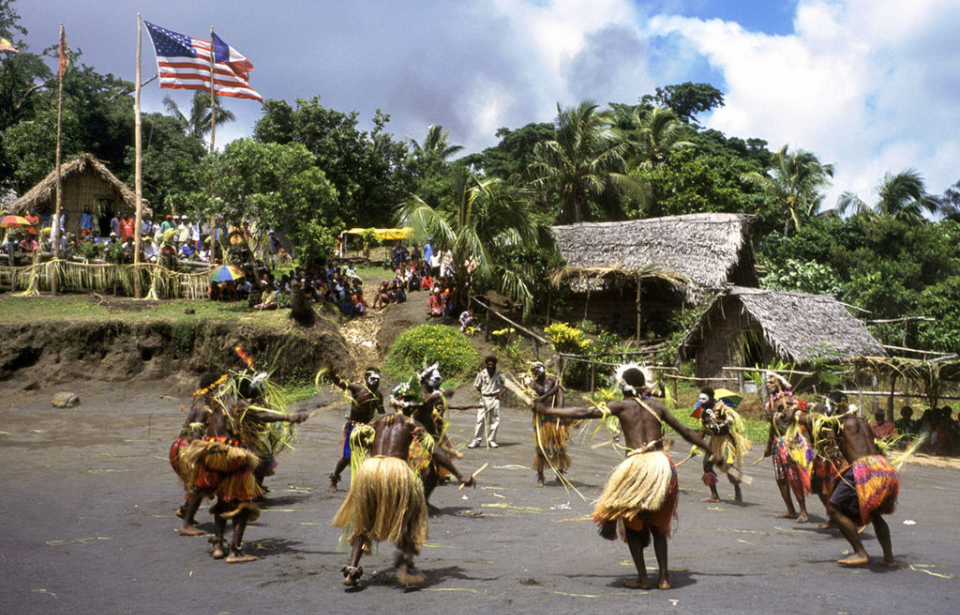Undoubtedly, the arrival of the Allies in Melanesia had a profound effect on those who lived there. Troops and natives came into contact for the first time, opening the latter up to new resources and materials. An unexpected outcome was the creation of cargo cults, religious movements that prayed for the arrival of abundant goods – as occurred during the Second World War.
Pre-World War II cargo cults in the Pacific
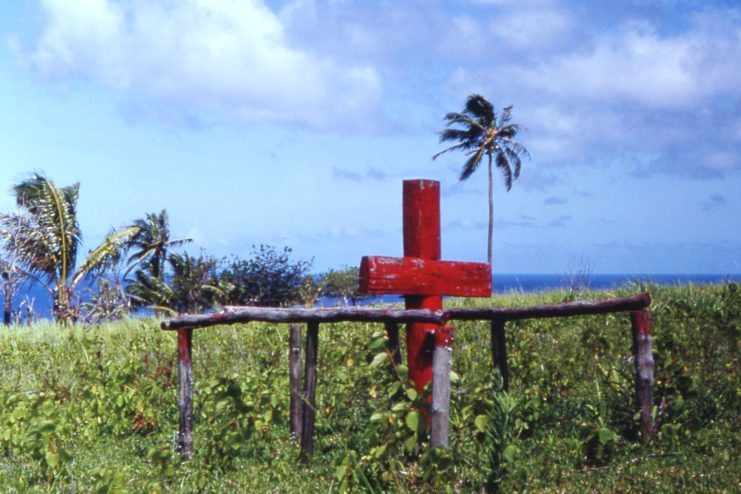
Although commonly viewed as a result of the Second World War, cargo cults existed prior to the conflict. The two most notable were the Fijian Tuka movement of 1885 and the Taro Cult of the Territory of Papua in 1919. Although both were brought about by the arrival of colonizers, the latter is the better documented of the two.
As with all cargo cults, the root of their belief system stemmed from the arrival of colonial goods. Not knowing where the supplies came from (and in such excess), the natives believed they were sent by deities or spirits. In this instance, the Taro Cult believed a steamer piloted by their dead would arrive with cargo – in particular, guns – that could be used to rid their island of the colonizers.
This practice, known as the Vailala Madness, was phased out by 1922.
Arrival of foreign troops in the Pacific
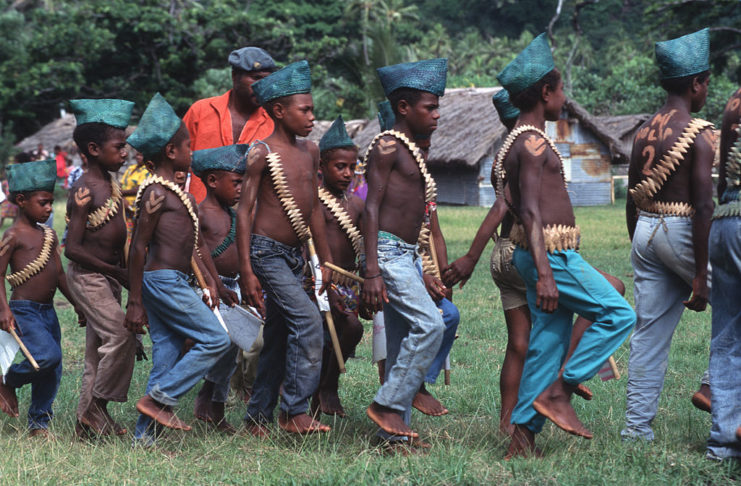
The Japanese were the first to arrive in Melanesia, distributing goods in the hopes of earning the islanders’ compliance. This worked for a time, but, eventually, relations between the two groups went south. The Americans arrived soon after and began dropping goods via cargo aircraft.
This, along with the goods being comprised of candy, medicine and technology, astounded the natives.
As they’d never seen manufactured goods before, they came to believe the items were created by a divine figure and delivered for them, not for use by the Allied troops. This indicated the beginning of a new age for many of the islanders, who thought the arrival of these men and goods meant they would no longer need to work, grow crops or trade – rather, everything would be provided by supernatural forces.
Military withdrawal from Melanesia
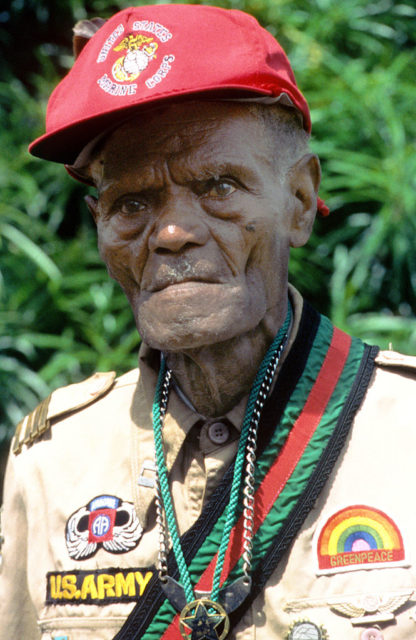
Understandably, when the Allies suddenly left Melanesia and their cargo disappeared, the islanders assumed the materials were being stolen from them by the White man before they could arrive. They turned to practices they’d seen used by the Americans when they were there, to make them return. This included behaving and dressing like US soldiers, creating fake air traffic control towers and lighting signal fires.
They also behaved like flight controllers because, as they viewed it, goods arrived when men stood on the runway waving signals, not recognizing they were landing strips. For villages that didn’t have their own, building landing strips and wharves, or creating warehouses, became part of cargo cult religious ceremonies.
John Frum cargo cult
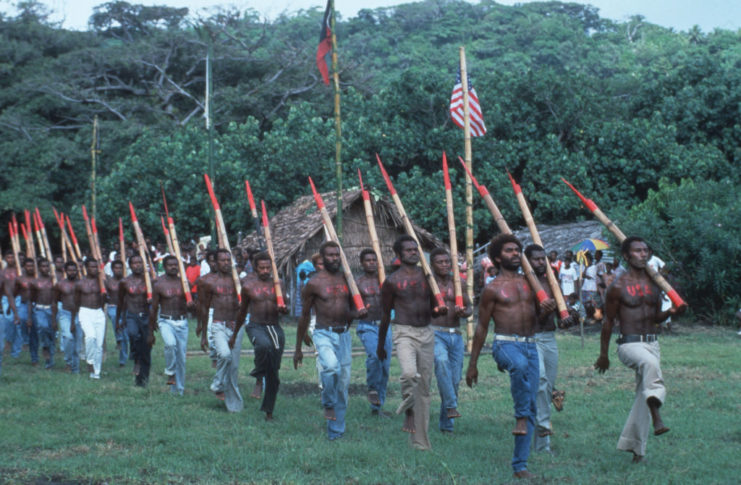
Undoubtedly, the John Frum movement, located on Tanna, Vanuatu, is the best-known cargo cult.
John Frum is depicted as an American GI who will come back to the natives and bring prosperity. It’s believed this religion was around well before the Second World War, but that its followers honored a different figure. With the arrival of the Americans, however, John Frum became the figurehead. One theory states the name came from a soldier who introduced himself as “Jon from America.”
The movement gained significant popularity among the islanders in the 1940s. Even as late as 1990, there were more than 5,000 followers. Christian influence on Vanuatu, however, drastically reduced this number to a reported 500 in 2022, relegated to the village of Lamakara.
Other deities worshipped by cargo cults
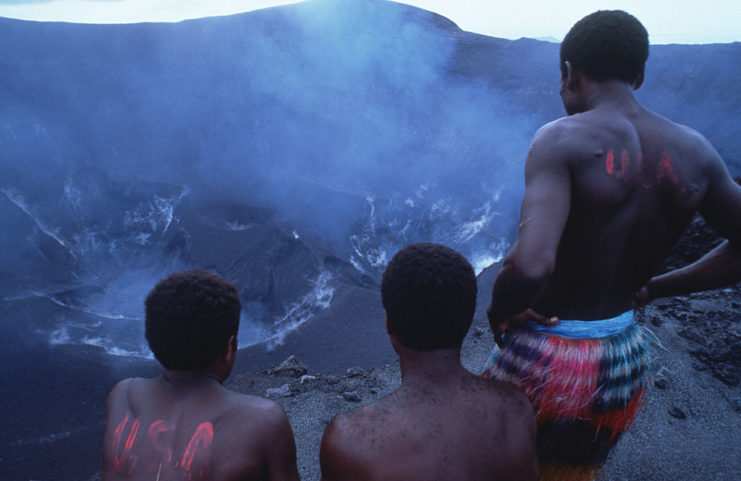
This hasn’t stopped followers from putting on impressive displays in honor of John Frum, who’s said to live in Vanuatu’s volcano. They believe he’ll return to them on February 15 – John Frum Day – so put together an annual celebration, in hopes he’ll appear. It’s said Frum will bring vehicles, medicine, food and appliances – exactly what the American GIs arrived with during World War II.
The celebrations are elaborate: the followers fly the American flag, children wear fake bandoliers and men paint “USA” on their chests while performing military drills in jeans. However, John Frum isn’t the only US military deity on the island. Elsewhere, native people follow US Naval officer, “Tom Navy.”
Prince Philip movement
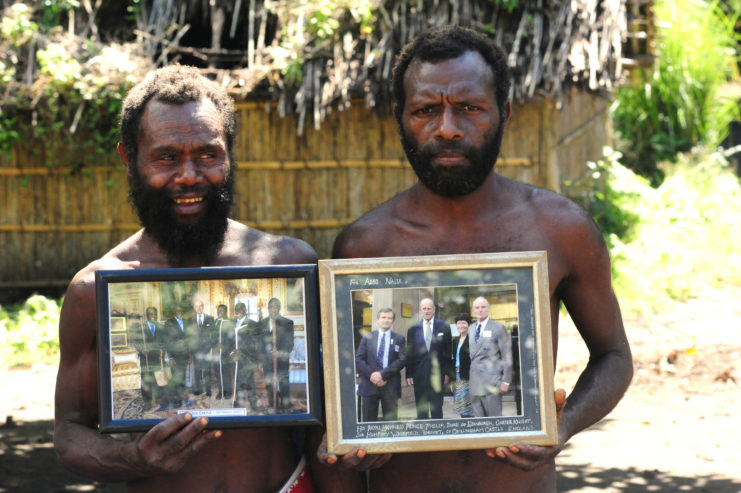
Some cargo cults have dedicated themselves to deities completely unrelated to the war. The Kastom people, in particular, follow the late Prince Philip.
It’s assumed their worship began around the 1950s or ’60s, believing he was the pale-skinned son of a mountain spirit and the brother to John Frum. Legends said this “son” would travel to a far-away land to marry a powerful woman (Queen Elizabeth II) and eventually return home to his people.
Prince Philip, none the wiser about his deity status, visited the village in 1974 with Elizabeth, only solidifying his position with the cargo cult. He was only told about it years later by the British Resident Commissioner, who suggested he send a signed photo to the islanders, which he did. In response, he was gifted a traditional pig-killing club, and sent them another photo, this time of him posing with the implement.
A final photo was sent in 2000, and each image has remained with the cargo cult’s chief.
More from us: The Plumbing Disaster That Led to the Sinking of U-1206
Prince Philip’s death in 2021 was devastating for the Kastom people. They held ceremonies in his honor and entered a period of mourning, which lasted weeks. It wasn’t all sad, however, as many of them believe he’ll return to his “spiritual home, the island of Tanna.”
